Last updated: January 1, 2024
Article
50 Nifty Finds #33: "First Lady" of National Parks
There is a long tradition of National Park Service (NPS) spouses supporting the national park work of their partners. From the 1920s to the late 1960s "park wives" were unpaid rangers, interpreters, archeologists, dispatchers, morale boosters, social directors, and hostesses to park visitors and NPS officials alike. Although the spouses of directors don't have formal roles in the NPS, they can be crucial to the success of a directorship. This was certainly true for the powerful partnership of Director George B. Hartzog, Jr. and his wife. Throughout his career, Helen C. Hartzog was his cheerleader, confident, and partner in developing a vision for the NPS that has had long-lasting effects. More than anyone, she served as a “first lady” of the NPS.
A Strong Foundation
Helen Genevieve Carlson was born on March 22, 1923, in Boston, Massachusetts. Her parents, Ernest Carlson and Jennie Otilia Carlson, were Swedish immigrants. They raised their five children in the Lutheran Church. Helen studied voice and piano from an early age. As a teenager she was part of a singing group that traveled throughout Massachusetts and performed on a weekly radio show in Boston. She enrolled in the School of Music at Boston University and took extension courses at Harvard College. She recalled, “Women were not allowed at Harvard, but they did give extension courses. That was the only way women could get into Harvard. I mean, you might date a Harvard man, but you weren’t allowed in the university.”
She met George B. Hartzog, Jr. during World War II. She recalled their first date in a 2009 oral history interview:
George went home on leave because he was going to come to Boston. He was going overseas. When he went home, he went out to visit his brother-in-law at the air base. His brother-in-law and my brother were roommates. They visited and he told my brother he was going to the Boston port of embarkation. He said, “Oh, well, let me call Mother, and maybe you can go out and have a nice home-cooked dinner. I know she’d love to fix it for you.” [George] telephoned and said that he was in Boston, and she invited him to dinner. I was not going to stay home except that my father would not be home for dinner that evening, and she insisted I stay. I had another date. He said, “Oh, I just happen to have two tickets to the theater. Would you like to go this evening?” Of course, “Oh, I’d just be delighted.” So, he took me to the theater. As I recall, the play was “The State of the Union.” Then we came home and had coffee.
After a three-and-a-half-year courtship, they married on June 28, 1947. She gave up her music career after they married, but her love of music remained. It would play an important role in her future position as the wife of an NPS superintendent and director.
A Park Service Family
The Hartzogs began their married life in Chicago, Illinois, where George was an attorney working at the NPS headquarters, which moved there during World War II. Helen got a job as a secretary with Quaker Oats. A housing shortage meant that they moved frequently between hotel rooms. Tired of moving every five days, Helen wanted to return to Massachusetts, but George found them a longer-term hotel option and she stayed. In October 1947 they moved to Washington, DC when NPS headquarters moved back there. They quickly moved to Denison, Texas, where George administered the leasing program at Lake Texoma National Demonstration Area. Helen later recalled that they moved 13 times in the first 11 months of their marriage. At Denison, the Hartzogs were embraced by the staff. Helen quickly learned that parks were communities and NPS families. She recalled being invited to Thanksgiving dinner that first year by George and Helen Fry, "It just inspired you; it was an inspiration that Thanksgiving. Here we were with our Park Service family. I was a new bride and we started with a park family on our first Thanksgiving."
In August 1948 the couple moved back to Washington, DC, and George returned to the NPS Chief Counsel’s Office. They lived on campus at American University, where George was studying for a master’s degree, and then moved into an apartment. In 1949 Helen gave birth to their twins George III and Nancy. She later recalled, “We were expecting one child, and we had the surprise of our life. It was a wonderful surprise.”
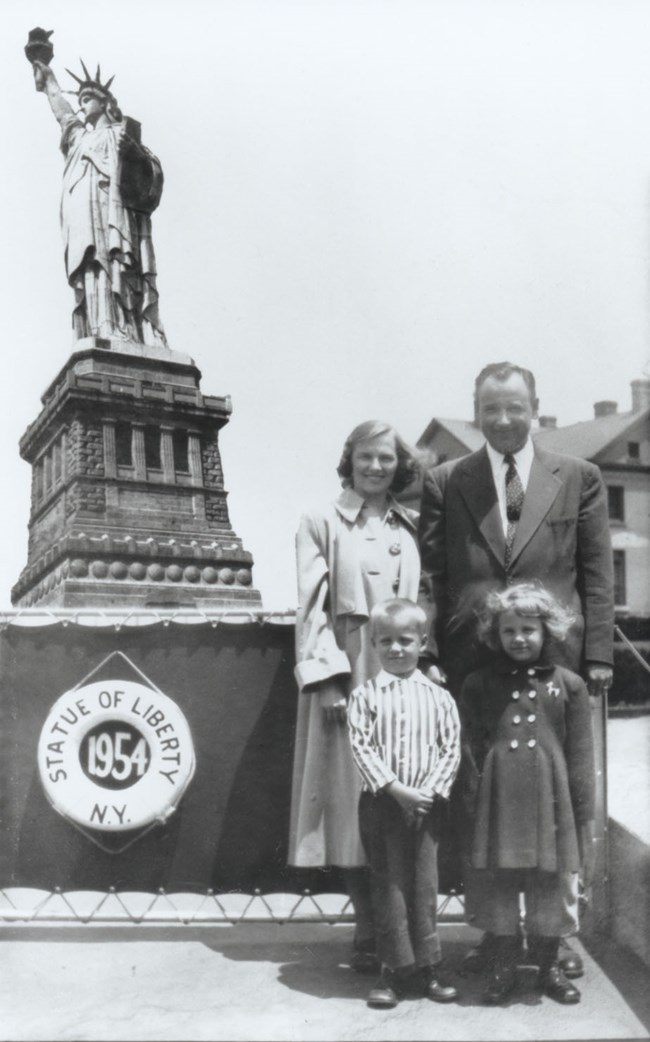
In August 1955 they transferred to Rocky Mountain National Park where George became assistant superintendent. Helen learned that NPS family often meant taking care of visitors too. Shortly after arriving at the park, a women’s two young boys went missing. While the rangers searched for them, George brought the mother home. It was Helen who comforted her through the night until her sons were returned safely. Although this was an early incident, it wasn’t the last. She recalled, “We took a lot of people in. You know, living in the park was living with your family.” She often helped transferring families as they packed up, welcomed new park families as they settled in, and cooked dinners for anyone who needed them. She also started a bridge group and a supper club at their house. George B. Hartzog III later recalled, “Those were the days when there was what was called park wives, because it always was principally men. And my mother was very, very instrumental in fostering camaraderie with the other women, and the park wives would do lots of things together, with their children, of course. [The time at Rocky Mountain] kind of set the tone for the rest of our pattern in the parks.”
The family enjoyed all the park had to offer. “The children skated. I skated. I used to do figure skating and the children would whiz around on their little skates. We went tobogganing. We skied. We hiked. We were just a part of all of the outdoor activities.” Helen volunteered at the children’s school. She also understood the importance of good community relations between national parks and their gateway communities. She volunteered in Estes Park, coordinating vacation bible school, directing a music program, and putting on plays. She also joined the local women’s golf association. She remembered, “I always involved park people with people of the town. It just made it smooth.”
In fall 1957 the family moved to Great Smoky Mountains National Park where George was assistant superintendent. While he was detailed to Washington, DC, Helen handled the move, set up house, and settled the children into school. Once again, she quickly immersed herself in the park community, entertaining park staff in her home with bridge and dinner parties. She also started a craft group to bring families together. Their son George III recalled, “I can still remember my mother and father in the evenings making these wonderful woven [caned] stools.”
Recalling their lives in the parks and women’s contributions Helen noted,
When the park ranger had to go into town, and he left his wife at the station and his wife manned the station while he had to go on business. Nobody criticized them. There was never anything wrong with that, because women did it out of love for the parks. We were as much park people as our ranger-husbands. We just did it. It was never spoken. It was never written into the law. Somebody had to be there to take care of the visitor. So, while the husband had to go off to a meeting, his wife would take over and greet the people, give them the information and help them. It was a love. I mean, the women loved it. We were all thrilled that we were able to be married to men in the Park Service. It was the greatest thing.
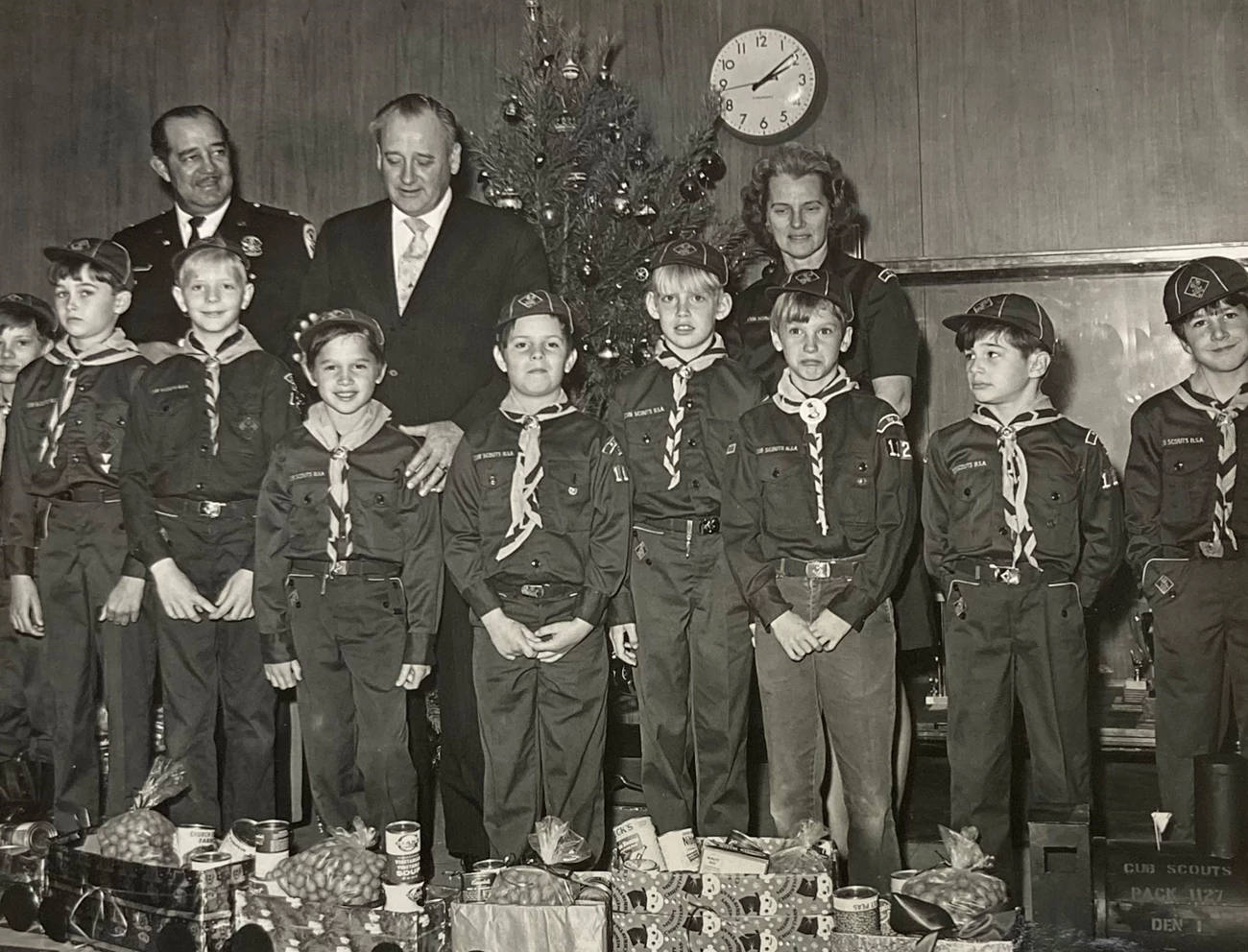
In February 1959 the family was on the move again. George became superintendent of Jefferson Expansion Memorial in St. Louis, Missouri. Once again, Helen engaged in the community and initiated NPS family gatherings, including Christmas celebrations for the children. On one occasion she temporarily transformed the basement of their residence into a French café where park staff could socialize. She recalled, “The Park Service family was No. 1 in my life. We had a wonderful group.” Helen also gave birth to their third child, Edward, in 1962.
A Powerful Partnership
In July 1962 George resigned from the NPS to become executive director of Downtown St. Louis, Inc. He returned to the NPS as an associate director in February 1963. Relocating to the Washington, DC area, the Hartzogs purchased a farmhouse with a few acres in McLean, Virginia, where they could raise their children among a few farm animals and garden.
When George became director of the NPS in January 1964, Helen continued to foster a sense of community but on a broader scale. The “family” concept expanded beyond the boundaries of a single park to the entire NPS. The Hartzogs appreciated the importance of personal relationships, and she believed the entertaining helped advance his agenda for the NPS. With her gracious manner, she warmly welcomed guests to their home. She recalled,
It was always our pleasure to have our park people here in our home. On many, many occasions I felt so honored. We had a party for Ansel Adams. We had many dinner parties. They varied in size. We had sixty-three people at a sit-down dinner. On another occasion we had a party here in our pasture and on our grounds and we had between 350 and 400 people for a book-signing party for Steward Udall.
Preparing for these lunches and dinners, often on short notice, usually involved the entire family. The children served as waiters, parking attendants, and furniture movers to create space inside the house, even as they met many NPS and political luminaries. “We just loved when our Park Service family would come because we were all interested in one thing, our parks. They enjoyed visiting with George and talking over problems, getting new ideas, or what should they do? They always liked to linger. I always felt, well, it was a success if they loved to linger.”
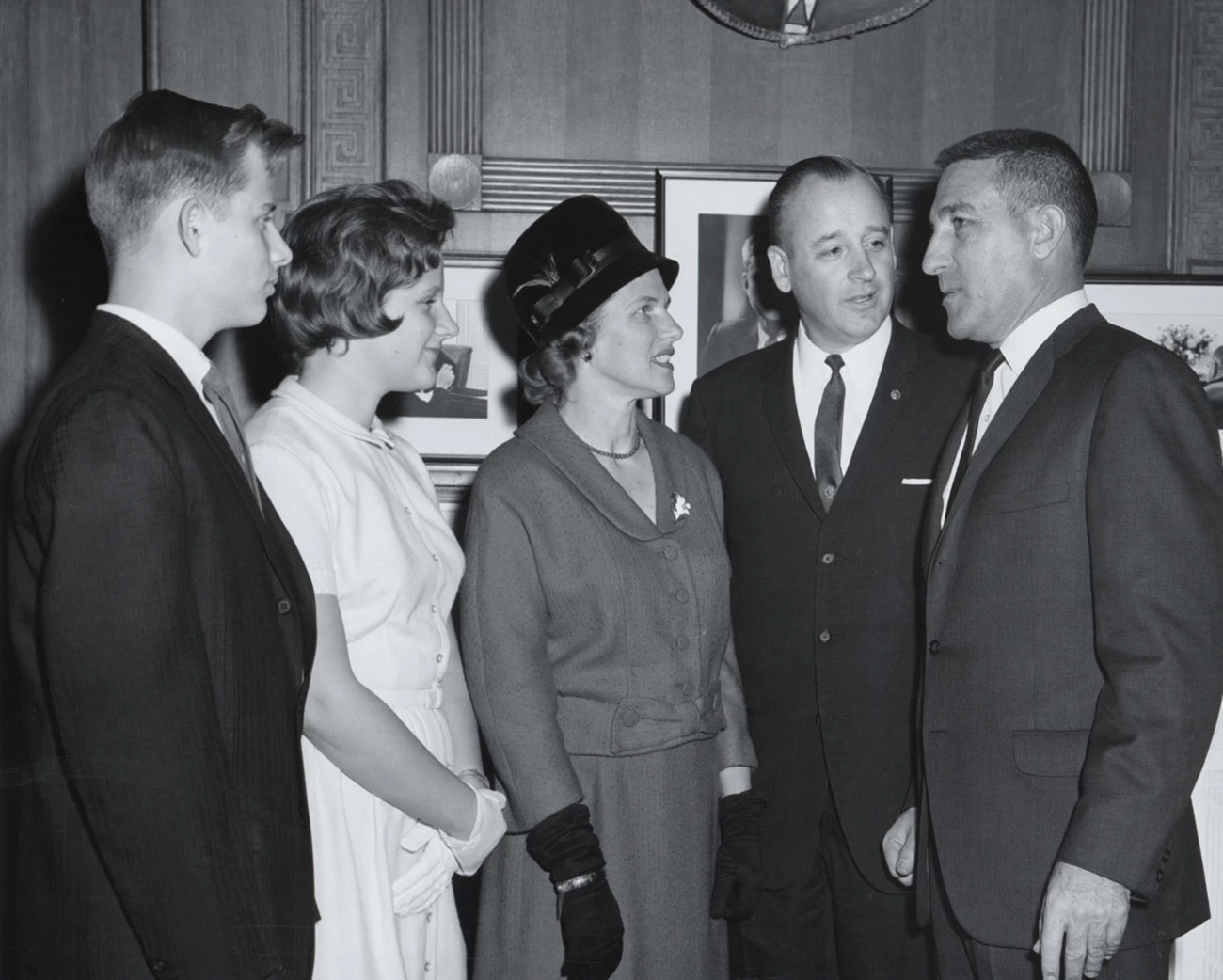
The Hartzogs also entertained Congressional representatives, giving George the opportunity to advocate effectively for NPS priorities and programs. Helen sang and played piano with Laurance S. Rockefeller. Many deals are said to have been done around her piano. She accompanied George at the inaugural ball for President Lyndon B. Johnson and on several trips to the Johnsons’ Texas ranch.
Helen recognized and respected the limitations on her involvement in official park business. She humbly described her role as that of a “helper.” Whatever George needed done, she explained, she and the children did. In fact, she became very skilled at navigating a complex organization and delicate situations. George noted Helen’s “incomparable ability to smile, be gracious, say something, and tell nothing.”
She traveled with him whenever possible, sometimes bringing the children with them. She joined him on “show me” tours with congressmen and their wives. A particularly memorable trip for her was a Europe tour to study historic preservation (leading to the National Historic Preservation Act of 1966). She also accompanied George to Alaska during a congressional trip to evaluate land for federal protection, which eventually added 43.6 million acres to the National Park System.
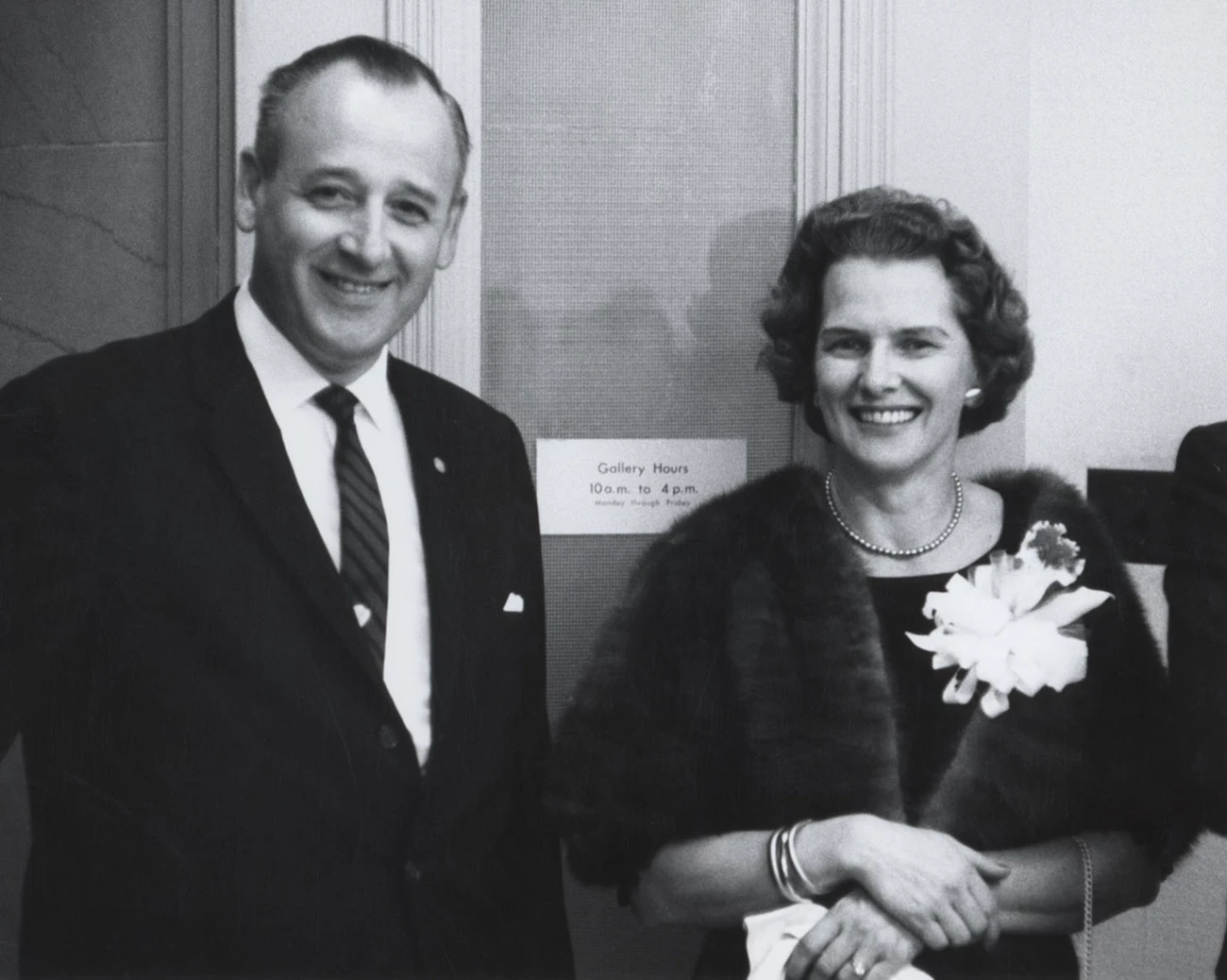
Helen was a trusted advisor to her husband, and he credited much of his success to her, remarking, “She’s involved importantly in my career.” One of his initiatives as director was a living history program designed to give visitors the experience of a site as it existed historically. Helen became personally involved at Arlington House, The Robert E. Lee Mansion in Virginia, putting together a program with volunteers dressed in period costume who would play music and entertain the public and special guests.
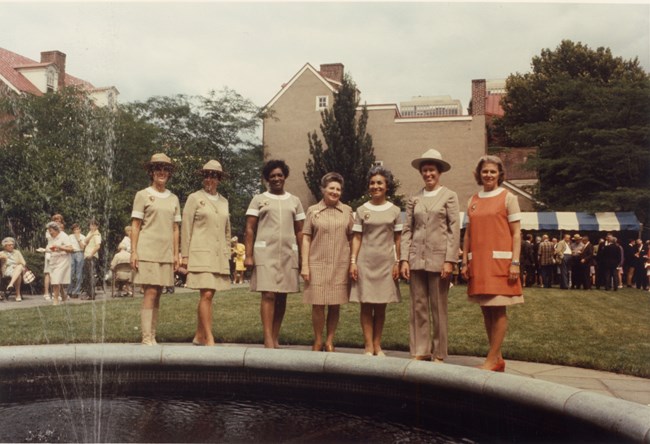
She is also credited as the spark behind the NPS volunteer program still in place today. Helen recalled,
People really didn’t want to retire from the Park Service. As I’ve always said, we were a family. It meant leaving the family, and none of us ever wanted to really do it. I had an idea that we should do something about this. I talked it over with George and he said, “It’s a great idea.” So, he started the Volunteers in Parks program [in 1970].
The Hartzogs themselves left the NPS sooner than they would have liked. Rumors were swirling that President Nixon was going to fire George after he cancelled a special use permit at Biscayne National Monument (now a national park) for one of Nixon’s associates. When the possibility of a transfer to assistant secretary for Indian Affairs rather than being fired was suggested by Secretary of Interior Rogers B. Morton, George discussed it with Helen. He later wrote,
I came home that night and Helen and I sat up until two o’clock in the morning talking about whether I should go ahead and leave or agree to accept [the job] if the president approved it. Her question to me was, “Why did you come back to Washington, after you left in the first place?” I said, “To be director of the National Park Service.” She said, “That’s right. And that’s the job we both love. If you can’t have that, tell them you don’t want any.” On that we went to bed.
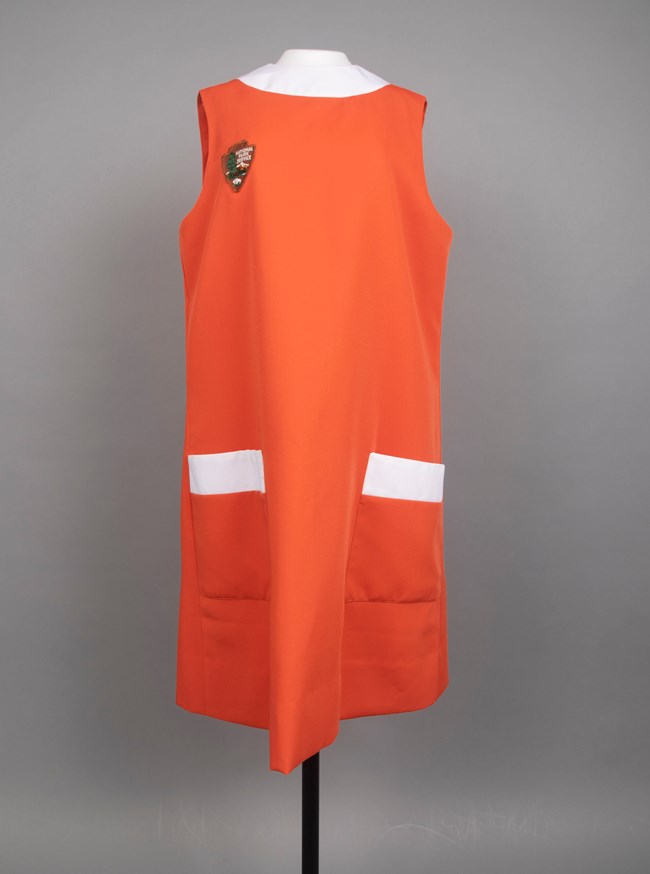
Continuing the Legacy
After leaving the NPS on December 31, 1972, George returned to his legal career. Helen owned and operated an antique shop in McLean. How they left didn’t alter their love for the NPS and its employees. For the rest of their lives, they continued to meet, entertain, and correspond with their many NPS friends and colleagues. Decades later Helen still proclaimed, “I say the Park Service family is the greatest family in America.” Their Volunteers in Parks program continued to grow, and Helen determined that volunteers deserved formal recognition for their efforts. She suggested this to George, who wholeheartedly agreed. In 2001 they donated funds to the National Park Foundation, establishing the George and Helen Hartzog Awards for Outstanding Volunteer Service.
George understood and gratefully acknowledged Helen's role in his personal and professional successes. After leaving the NPS he worked to form the White House Historical Association—and she continued to support him there too. She also typed the manuscript for his 1988 memoir, which he dedicated to her writing, “Marrying her was the smartest thing I ever did.” In 2008 Clemson University established the George B. Jr. and Helen C. Hartzog Institute for the Parks. The Institute creates, conducts, and disseminates a broad range of education and training programs for current and prospective park professionals. George Hartzog died on June 27, 2008, in Arlington, Virginia, just days after finalizing the legal documents creating the institute.
Helen continued to champion his legacy, describing her role only as that of “helper.” As with many “park wives,” her important behind-the-scenes contributions are not always given the NPS recognition they deserve. While the paid jobs were his, not hers, she nevertheless worked tirelessly to support him, the parks they lived in, and their shared vision for the NPS. Into her 90s Helen continued to feel passionately about the NPS family. Speaking of their life and work together, she said, “I loved every minute of it. I just thoroughly enjoyed it.” Helen C. Hartzog died on February 11, 2022, in Ormand Beach, Florida. She was 98 years old.
Sources:
--. (1947, June 27). “Carlson-Hartzog.” The Columbia Record (Columbia, South Carolina), p. 7.
--. (2008, July 17). “Clemson University Park Facility to be Named for Hartzog.” Anderson Independent-Mail (Anderson, South Carolina), p. 31.
Burnett, Jim. (2010, May 18). “Hartzog Awards for Outstanding Volunteer Service Show Citizens Can Make a Big Difference for Parks.” National Parks Traveller. Available online at https://www.nationalparkstraveler.org/2010/05/hartzog-awards-outstanding-volunteer-service-show-citizens-can-make-big-difference-parks5866
Hartzog, George B., Jr. (1988). Battling for the National Parks. New York: Moyer Bell Limited.
Hartzog, George B., III. (2023, April 11). Oral history interview with Nancy Russell. NPS Oral History Collection (HFCA 1817), NPS History Collection, Harpers Ferry, WV.
Hartzog, Helen C. (2009, August 11). Oral history interview with Dr. Lu Ann Jones. NPS Oral History Collection (HFCA 1817), NPS History Collection, Harpers Ferry, WV.
Hartzog, Helen C. (2009, August 12). Oral history interview with Dr. Lu Ann Jones. NPS Oral History Collection (HFCA 1817), NPS History Collection, Harpers Ferry, WV.
Hartzog, Helen C. (2009, August 27). Oral history interview with Dr. Lu Ann Jones. NPS Oral History Collection (HFCA 1817), NPS History Collection, Harpers Ferry, WV.
McDonnell, Janet A. (2016). “Helen Hartzog Biography.” NPS Oral History Collection (HFCA 1817), NPS History Collection, Harpers Ferry, WV.
